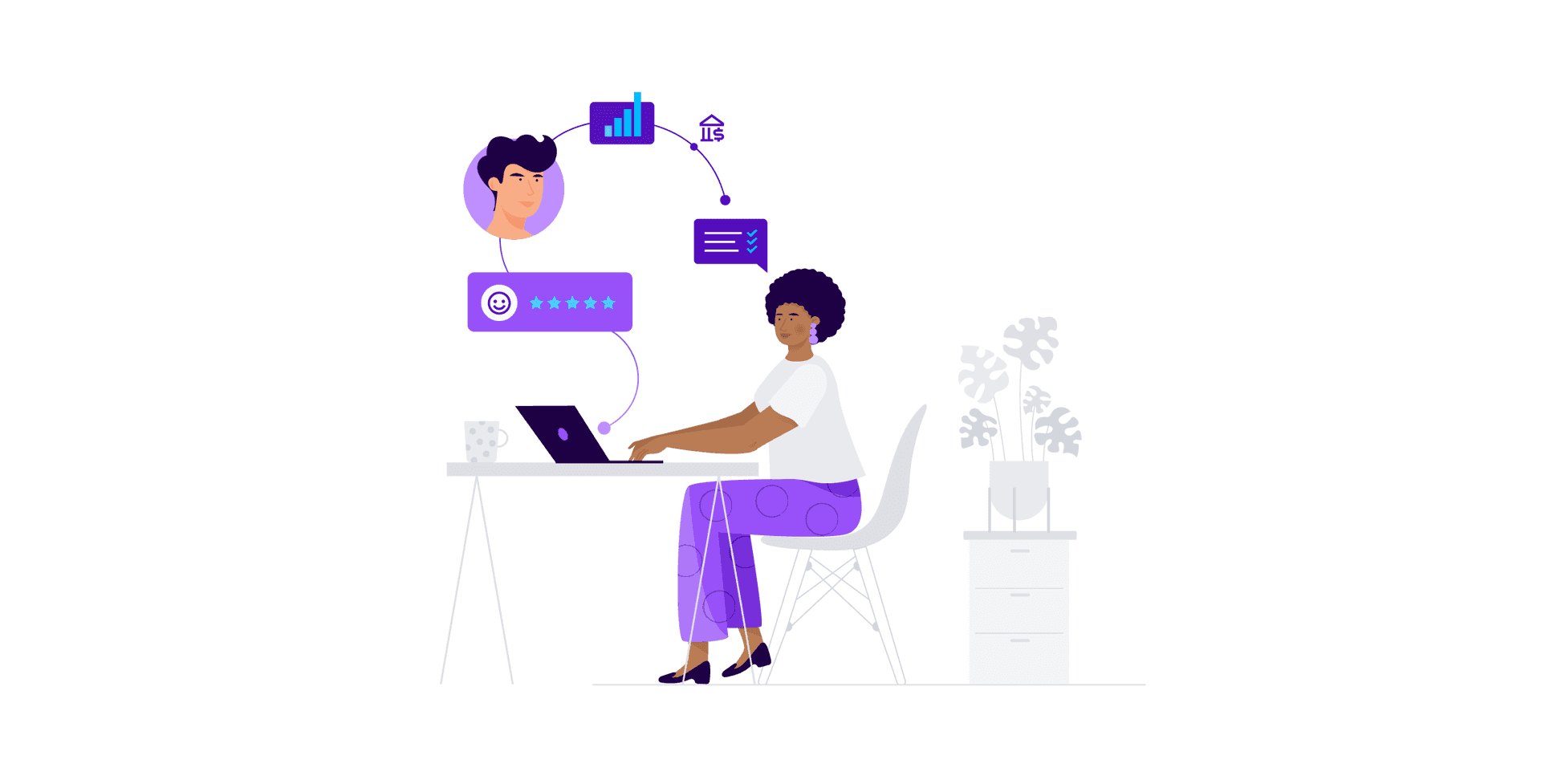Partner-first strategies to improve customer service in banking

By Bhavana Rana
0 min read

The customer experience in banking has undergone rapid, major changes in the last few years. Now, traditional banks have reached a tipping point where they must embrace new approaches to remain profitable and competitive.
A partner-first, platform-based model offers a flexible and scalable solution that builds on the existing trust banks have with their customers. When banks can leverage the right partners, they set themselves on a path of transformation toward innovation and customer value.
This path will also involve a pivot towards embracing an approach that brings multiple players into a single, integrated ecosystem.
In the end, the adoption of partner-first strategies can successfully future-proof a savvy financial institution, improving the customer experience along the way. But, to manage this successfully, banks will have to change the way they operate and executives will need to re-examine their roles in the financial marketplace and customer journey.
The top reasons it’s time for banks to make a change.
After years of economic pressure—including the 2020 lockdown, supply chain issues, labor shortages, and rising inflation—the global market has changed dramatically.
Here are just a few of the reasons banks can no longer avoid adapting to a tech-run world.
1. Customer expectations of financial institutions are higher.
Consumer behaviors and expectations have shifted. Internet banking and mobile banking have taken off as they provide more convenient access to banking services than traditional brick-and-mortar branches.
As a result, customers now expect financial institutions to meet them where they are for all of their needs. This means that banks need to be available on multiple channels for their customers, at nearly all hours of the day.
To have a truly exceptional customer experience in banking, you must take this a step further and provide omnichannel customer support that caters to every step of the customer journey.
2. Regulatory frameworks around open banking put data in the hands of the customer.
Data regulation is a controversial topic that transcends industries. When we’re talking about the customer experience in banking, however, data usage becomes a double-edged sword.
Existing regulatory frameworks around open banking, particularly in the US, put data in the hands of the customers themselves.
In the modern world, data is one of the most powerful things a customer–or a business–can hold. As banking customers take this power into their own hands, banks will need a partner-first approach to incorporate data into customer retention and satisfaction strategies.
3. Modern technology allows collaborative, scalable ecosystems to flourish.
Moving away from legacy systems and building architecture that is open—and even collaborative—with competitors and fintech players is often met with apprehension from banks.
In the pre-internet age, banking was highly competitive and not collaborative. Opening to new ideas can be challenging when dealing with a “kill or be killed” mindset. But, in spite of the challenge, it’s time for banks to step away from traditional strategies and embrace more agile methodologies.
Working with tech-savvy partners can allow banks to quickly solve their customers’ pain points and improve the customer experience in banking.
Five ways partner-first, tech-friendly strategies can improve the customer experience in banking.
As necessary as adopting partner-first strategies in banking is, it won’t always be easy.
One cautionary tale involves a bank that came up with an innovative idea for a program focused on personal finance management. At the time, few banks offered customers this personalized service. So the bank created a three-year strategy to enable the program.
But that three-year timeline quickly became a five-year timeline.
In the meantime, several technology providers also recognized the need for a solution around personal financial management and produced their own solutions.
“Ironically for the bank, one of their competitors decided then to partner with one such vendor, and they were able to realize the significant first-mover advantages of enabling that capability,” says Rahul Kumar, Senior Director of Banking Strategy at Talkdesk.
“To this day, the bank who came up with the idea is still playing catch up to the competition.”
So how can banks avoid this disastrous scenario?
1. Create easier accessibility.
As we mentioned above, modern customers don’t only want accessibility, they expect it. Banks that can keep up with the different digital channels a customer uses and provide an optimal omnichannel customer experience will stand head and shoulders above their competitors in today’s marketplace.
Branchless banking allows customers to fit banking into their schedules with ease. And as digital banking rises, the need for partners who can create that seamless mobile banking experience increases as well.
The accessibility that mobile banking offers make their mobile banking app and feature an integral part of customers’ daily lives. And when banks can incorporate a human touch into that online banking support, loyalty to their banks only grows.
2. Offer a more personalized customer experience.
Personalized customer experiences are some of the most powerful tools the modern bank has at its disposal.
When implemented with care, a personalized banking experience for customers can lead to a 10% increase in annual revenue.
But human interaction on the phone isn’t enough on its own. It must be integrated with relevant information, ease of use, and quick assistance.
At Talkdesk, we have these features built into our customer service software. Agent Assist™ is an AI-powered tool that automatically sifts through information databases to give your call center agents real-time guidance about relevant services, specific customer account information, suggested scripts, and more.
3. Increase data security.
Increased data security is a keystone of the modern customer experience in banking. One small leak can damage the customer relationship and brand image for years into the future.
This means banks must implement steps to keep customers’ sensitive data secure and safe. Be transparent about your commitment to data protection, implement best practices for your call center recording and call monitoring, and employ a team or partner who is dedicated to protecting your financial institution against constantly evolving security threats.
4. Provide immediate real-time assistance.
When customers need banking assistance, they don’t want to wait. Operating within normal business hours is common but not the rule. The customer experience in banking decreases dramatically when they find themselves waiting on the line for support, information about their own accounts, or clarification to a simple question.
Chatbots using conversational AI can provide 24/7 assistance at the fraction of the cost of a human workforce. Plus, today’s AI-powered tools are amazingly adept at handling simple requests or queries, as well as passing on the context of a query to a live agent.
By keeping these simple questions out of the caller queue, your contact center agents can get to the more complex calls quicker.
5. Shift into a facilitator role.
In this role, banks can pivot quickly by tapping partners that are willing to co-create and co-innovate with them to drive value for customers.
“If you look at certain platform indices in the market today, they are a significant multiplier ahead in terms of return on equity compared to the standard Dow Jones or the NASDAQ indices,” says Rahul.
“There’s data that supports the fact that organizations that embrace a platform-based strategy are expected to outperform the standard product-pushers or suppliers.”
Banks can anticipate and respond to customer needs on a large scale by utilizing a platform-based partner approach. Additionally, banks can deepen existing relationships to develop a more seamless customer experience.
For example, a small business may maintain its accounts and do financing with the same bank—but that small business also has financial needs related to accounting, paying taxes, and executing payroll.
Can you see the value of building an ecosystem that brings in fintech providers with solutions to address all those needs? It allows the bank to provide the small business with a one-stop shop.
Partner-first: For increased profits and improved customer experiences.
Fintechs and new market entrants shouldn’t be viewed as competition; in reality, they’re an opportunity for collaboration.
Established banks can leverage nontraditional players by developing new models that create win-win scenarios for both parties.
The modern bank isn’t stuck in old ways of doing things. Instead of fearing partnerships, the modern bank embraces them and sees partnerships as an opportunity to improve time to value and create agile workflows.
By strategically building a partner-first model, your financial institution can use its platform to bring together the best financial tools available for its customers. The time to make this pivot is now, as change is being driven by consumer behavior, and technological advances are paving the way for rapid innovation.
Most importantly, continue expanding your understanding of the customer experience in banking. Learn how partner-first strategies can transform the way banks interact with their customers and find their place in today’s world.

Customer experience in banking FAQs.
What is the customer experience in banking?
The customer experience in banking is your relationship with customers. It covers how they feel about every interaction from opening the banking app as a new account owner to securing funding for a new loan, down to calling a customer service agent for help with their account.
What do customers expect from a digital banking experience?
Today’s customers expect a variety of things as part of their banking customer experience. These can include:
- Mobile banking.
- Easy access to customer support at any time, anywhere.
- Higher data security.
- Personalized suggestions for products and services.
How can you measure customer experience in banking?
Measuring the customer experience in banking requires an in-depth knowledge of physical branches, contact center support, mobile banking usage, and brand perception. It is not something you should do once a year or even once a quarter but must be an ongoing effort that may include:
- Customer satisfaction surveys, offered in-app or via post-call IVR survey.
- Listening to what your customers say about you through reviews, social media, or during a panel interview.
- Mapping the customer journey and understanding where customers are getting lost, stuck, or spending the most time.
What are the benefits of improving customer experience in banking?
A few of the benefits of improving the customer experience in banking include:
- Increased customer loyalty.
- Better customer referral rate.
- Deposit growth.








